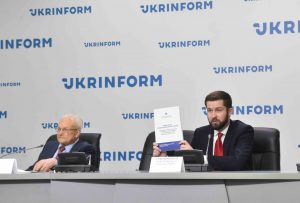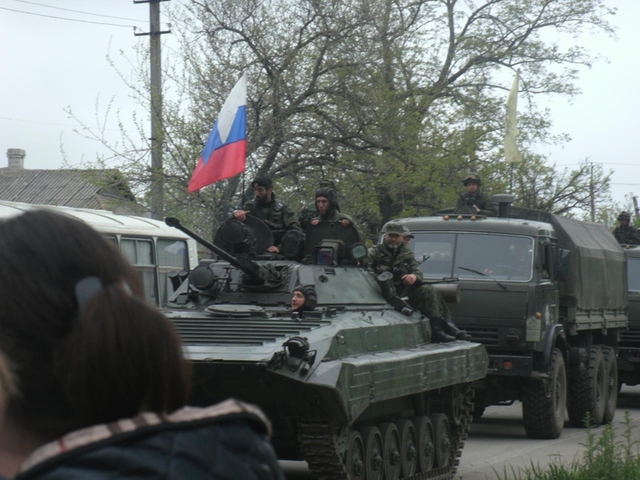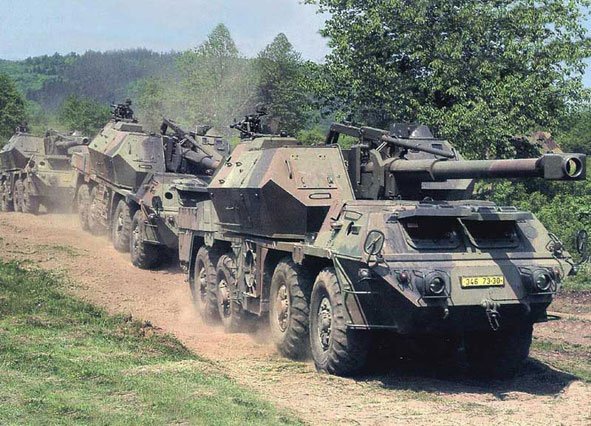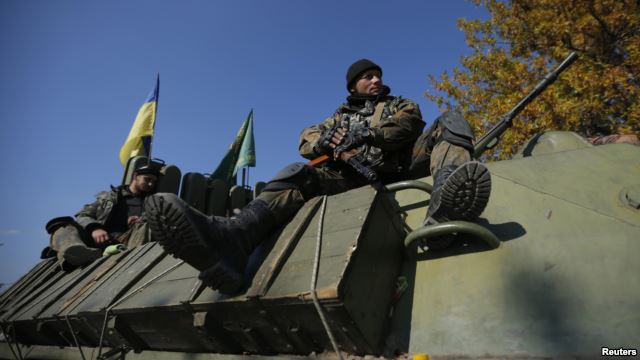The report provides a legal assessment of the Russian aggression against Ukraine and outlines the organizational structure of the Russian military invasion force that had been involved in the fighting against Ukraine since March 2014. The force, the study shows, comprised regular and irregular units of the Russian Army, Don Cossack formations, and private military contractors.

Russia’s annexation of the Ukrainian Crimean peninsula, which took place from 20 February to 18 March 2014, marked the initial stage of Russian aggression in Ukraine. The Kremlin eventually admitted the obvious – the Russian military and security agencies were behind the occupation of Crimea. This is the fact that in and of itself convincingly and irrefutably testifies to the Russian Federation’s armed aggression against Ukraine, according to the report.
Meanwhile, the expansion of the armed aggression of the Russian Federation to the Donbas region, the relatively latent stage of which continues to this day, was and has been accompanied by the Kremlin leadership’s denial of the participation of the Armed Forces of the Russian Federation in hostilities in Donetsk and Luhansk oblasts.
The study reveals and names a number of direct participants and their membership in particular units of the Armed Forces of the Russian Federation or irregular units or the occupation administrations, which included “coordinators, commanders, instructors, and perpetrators of international crimes.”
Finds
The data consolidated and systematized in the report shows that right after the annexation of Crimea in February 2014, the Russian Federation continued its armed aggression against Ukraine by using regular and irregular formations of its armed forces in eastern Ukraine. From March 2014 to February 2015, they managed to establish control and occupy certain areas of Donetsk and Luhansk Oblasts.
The identification of the particular units is based on open-source data. Among the 52 detachments of the Russian regulars, there are tank and artillery units, air defense, engineering troops, the infantry comprised of motorized rifle, airborne, marine, special action forces. The invasion force also included auxiliary and supply units.
Russia had established at least 27 field camps of its armed forces along the Ukrainian-Russian border, which were also used to train its irregular units, according to the report.
The Russian Army conducted at least 149 cross-border rocket and artillery attacks from its territory targeting the Ukrainian positions in the Ukrainian territory, namely the near-border areas of Luhansk and Donetsk oblasts.
Read also: Bellingcat publishes interactive map of Russian artillery strikes across Ukrainian border
Russia also engaged paramilitary formations of the Russian Don Cossacks in its aggression against Ukraine. According to the findings of the report, the Cossack formations operated mainly in Luhansk Oblast.
Another actor in the Russian aggression in the Donbas was the private military company (PMC) E.N.O.T. Corp. The PMC disguised its activities as providing humanitarian aid. However, among the tasks it performed in Ukraine’s occupied territory were delivering weapons and supplying irregular units of the Russian Armed Forces, protecting Russian-backed field commanders and the occupation administration leadership, liquidating field commanders of irregulars who showed signs of disobedience. The PMC also participated in hostilities directly.

During the unfolding Russian aggression against Ukraine, the command of the Russian Armed Forces had created special military structures to manage its regular and irregular armed formations in the occupied territory. Following the massive offensive of Russian regulars in August 2014, Russia formed on the basis of irregular units the “1st Army Corps” stationed in the occupied Donetsk Oblast, and the “2nd Army Corps” stationed in Luhansk. To command them, Russia established the “12th Reserve Command” of its Southern Military District (military unit № 89462).
The report identified 154 people involved in preparing the armed aggression against Ukraine and participation in it. Among them are 37 senior Russian political and military leaders responsible for planning, launching, and carrying out armed aggression against Ukraine. There also are 117 field commanders and other combatants, including 37 Russian citizens, 1 German citizen, 1 Brazilian citizen, and 1 South Ossetian citizen, and 77 mercenaries from among the citizens of Ukraine.
The armed conflict in Ukraine’s easternmost historical region of the Donbas made up of Luhansk and Donetsk oblasts started in 2014 soon after Russia’s invasion and annexation of the Ukrainian Crimean peninsula. Since its beginning, the war claimed more than 13,000 lives and displaced almost 2 million people. Russia keeps denying its involvement in the conflict. The occupied territories of two Ukrainian regions are officially known as ORDLO or Certain Areas of Donetsk and Luhansk Oblasts.
Read more:
- International Criminal Court finally agrees to open case regarding war crimes in occupied Crimea and Donbas
- War on terms: who’s fighting against Ukraine in Donbas – terrorists, rebels, insurgents?
- Number of those killed in Donbas war rises to 10,090 – UN report (2017)
- The price of Russia’s war is too heavy for Ukraine to lift alone – report
- Executed in Donbas: activists present data on 95 extrajudicial killings
- Donbas Lost Generation: a journey among the victims of the Russo-Ukrainian War
- Ukrainian army now fights not only Russian proxies in Donbas, but also spread of COVID
- Ukraine provides evidence of Russian aggression in Ilovaisk, but Ukrainian command’s responsibility hushed up
- More evidence of Russia’s aggression against Ukraine discovered by digital sleuth as Russia keeps denying its involvement
- Ukraine-Russia peace talks are in a stalemate as Kyiv eyes ways to revise Minsk deal
- Bellingcat publishes interactive map of Russian artillery strikes across Ukrainian border
- Leaked Kremlin emails show Minsk protocol designed as path to Ukraine’s capitulation – Euromaidan Press report








